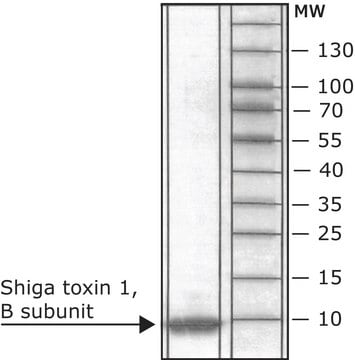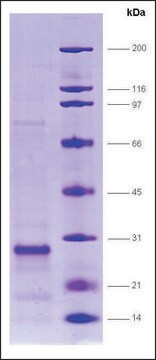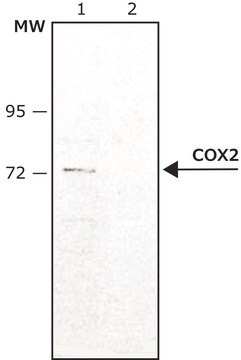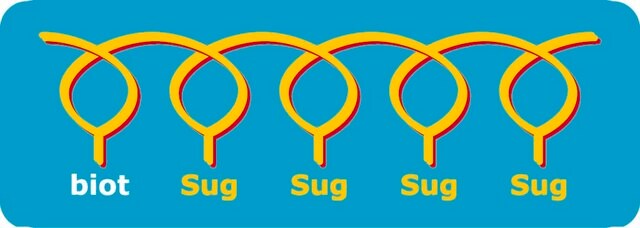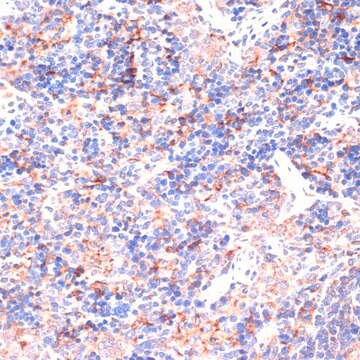Key Documents
SAB4200774
Anti-Shiga Toxin 1, B Subunit (STxB) antibody, Mouse monoclonal
clone 13C4, purified from hybridoma cell culture
Synonim(y):
Anti-SLT-1 B subunit, Anti-SLT-1b, Anti-Shiga-like toxin 1 subunit B, Anti-Verocytotoxin 1 subunit B, Anti-Verotoxin 1 subunit B, Anti-stxB
About This Item
Polecane produkty
pochodzenie biologiczne
mouse
Poziom jakości
forma przeciwciała
purified from hybridoma cell culture
rodzaj przeciwciała
primary antibodies
klon
13C4, monoclonal
opis
Research area: Microbiome
Postać
buffered aqueous solution
masa cząsteczkowa
~7 kDa
reaktywność gatunkowa
E. coli
stężenie
~1.0 mg/mL
metody
flow cytometry: 2.5-5 μg/test using human RAMOS cells pretreated with recombinant Shiga toxin 1, B subunit
immunoblotting: 1-2 μg/mL using purified recombinant Shiga Toxin 1-B subunit produced in E. coli (using PVDF membrane)
immunoprecipitation (IP): suitable
izotyp
IgG1
numer dostępu UniProt
Warunki transportu
dry ice
temp. przechowywania
−20°C
docelowa modyfikacja potranslacyjna
unmodified
Opis ogólny
Specyficzność
Immunogen
Zastosowanie
- immunoblotting
- flow cytometry
- immunoprecipitation
Działania biochem./fizjol.
Postać fizyczna
Inne uwagi
Nie możesz znaleźć właściwego produktu?
Wypróbuj nasz Narzędzie selektora produktów.
Kod klasy składowania
10 - Combustible liquids
Temperatura zapłonu (°F)
Not applicable
Temperatura zapłonu (°C)
Not applicable
Certyfikaty analizy (CoA)
Poszukaj Certyfikaty analizy (CoA), wpisując numer partii/serii produktów. Numery serii i partii można znaleźć na etykiecie produktu po słowach „seria” lub „partia”.
Masz już ten produkt?
Dokumenty związane z niedawno zakupionymi produktami zostały zamieszczone w Bibliotece dokumentów.
Produkty
An overview of human microbiome research, workflow challenges, sequencing, library production, data analysis, and available microbiome reagents to support your research.
Nasz zespół naukowców ma doświadczenie we wszystkich obszarach badań, w tym w naukach przyrodniczych, materiałoznawstwie, syntezie chemicznej, chromatografii, analityce i wielu innych dziedzinach.
Skontaktuj się z zespołem ds. pomocy technicznej
